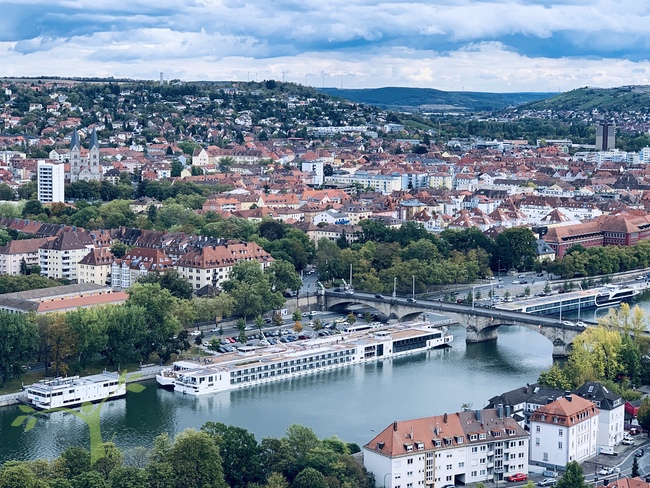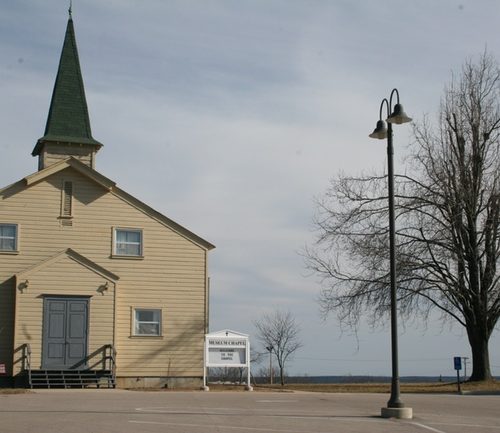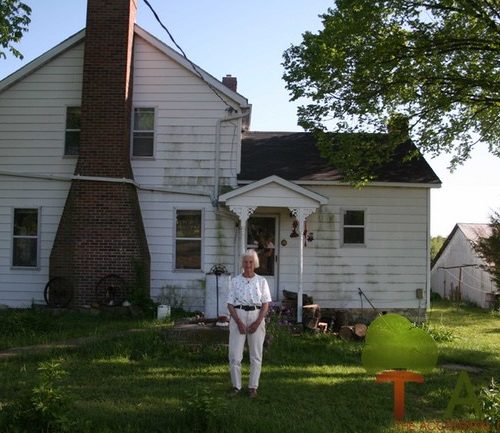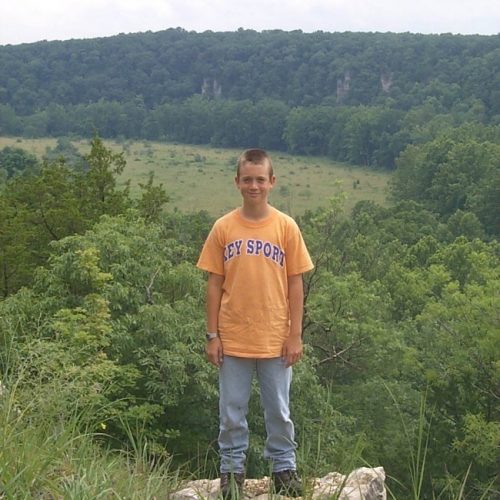This was impressed upon us again and again: In Germany, Franconia is part of Bavaria … but Bavaria is not Franconia. What’s the difference, you may wonder? Franconia is the northern area of the kindgdom of Bavaria and the people poo-poo the notion of being called Bavarians. They prefer, as our guides said again and again, to be known as Franconians. The agenda on our first ever Viking River Cruise (Grand European Tour) for day #8 included hoofing it around the lovely city of Würzburg, set in Franconia.
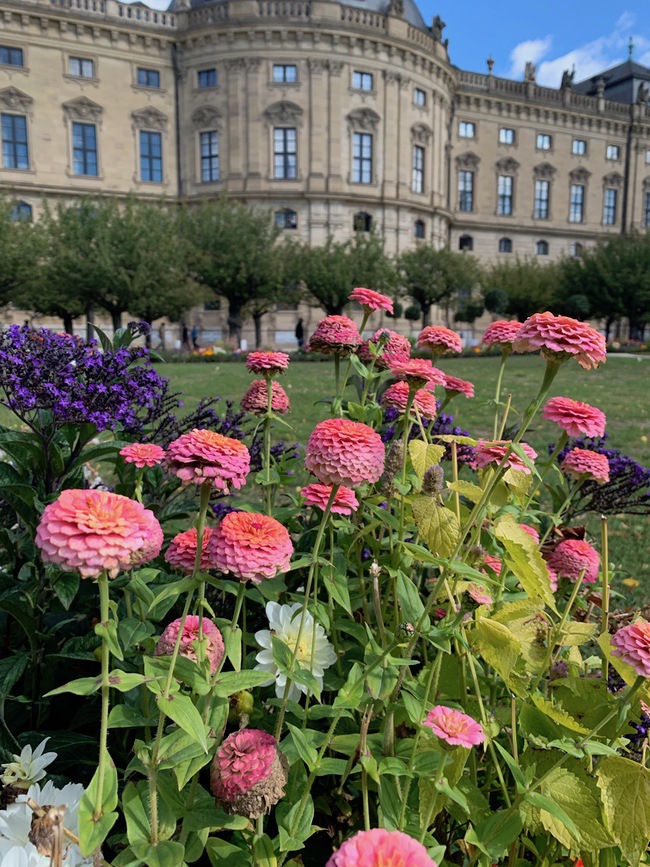
They grow a lot of luscious grapes for white wines in this region of the country, and from the river, it appeared that any piece of land that could hold a vineyard, did hold a vineyard. In fact, not many of the wines make it out of this region – because Franconians love their wine.
Indeed, Würzburg is home to Germany’s oldest and largest vineyard, Grosse Lage-designated Stein vineyard. Although Allied bombers almost destroyed Würzburg, it has been rebuilt and renewed as an example of baroque architecture.
A Day in Würzburg
Our Mercedes Benz coach whisked us over to the Bishops’ Residenz Palace (started construction in 1719), a UNESCO World Heritage Site. At these sites, you are not allowed to take photos inside. However, etched in my mind is the grand staircase with a 6,400-square-foot “Four Continents” fresco painted by Giovanni Tiepolo, a Venetian artist.
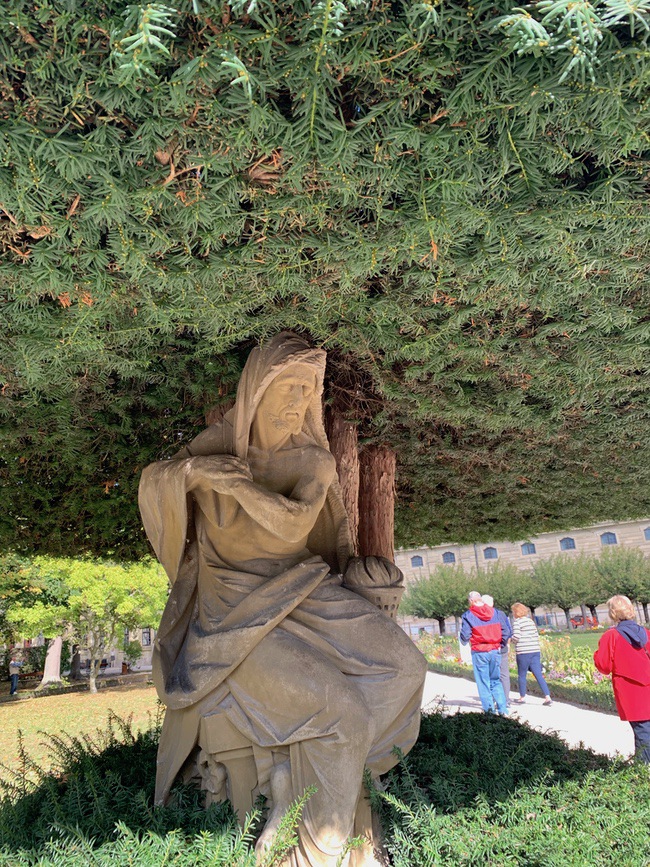
We especially enjoyed – having experienced the opulence therein – the garden near the palace, with its manicured hedges and greens.
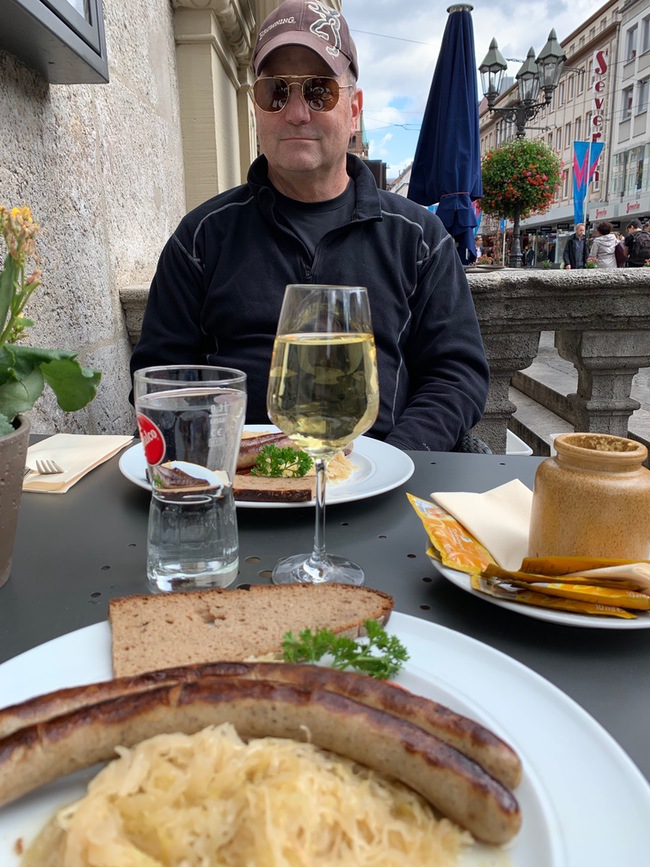
We then broke away from the tour group for lunch in the city center, where I enjoyed white wine with an entrée that included local sausage, bread, kraut and mustard.
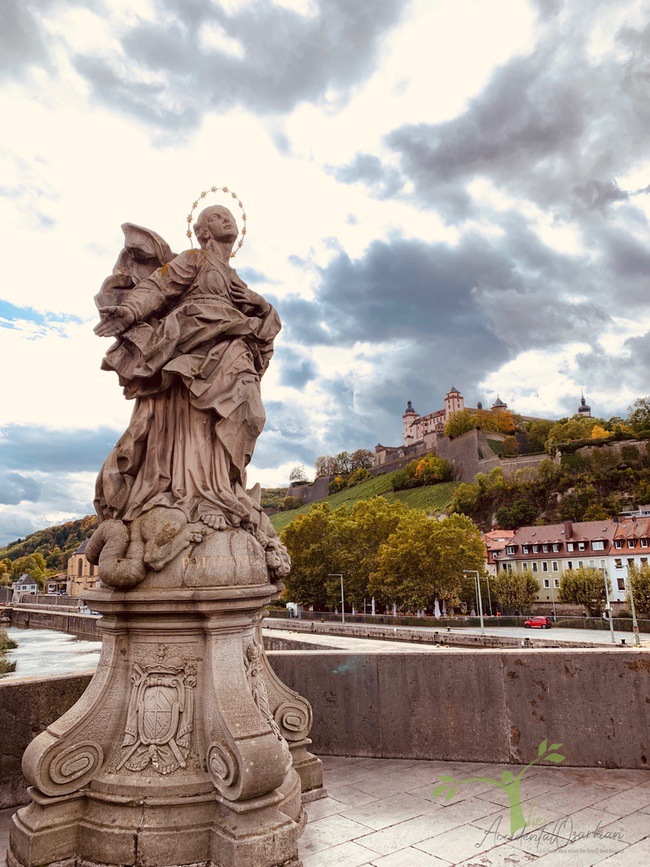 After lunch, we headed across the Old Main Bridge, which stretches across the Main River, and connects the old town with the hill that leads up to the Marienberg (Mary’s Mount) Fortress, which began as a Celtic hill fort and evolved into being a residence for bishops. While crossing the bridge, we passed iconic statues, including Charlemagne and 3 Christian martyred Irish saints (Kilian, Kolonat and Tonan).
After lunch, we headed across the Old Main Bridge, which stretches across the Main River, and connects the old town with the hill that leads up to the Marienberg (Mary’s Mount) Fortress, which began as a Celtic hill fort and evolved into being a residence for bishops. While crossing the bridge, we passed iconic statues, including Charlemagne and 3 Christian martyred Irish saints (Kilian, Kolonat and Tonan).
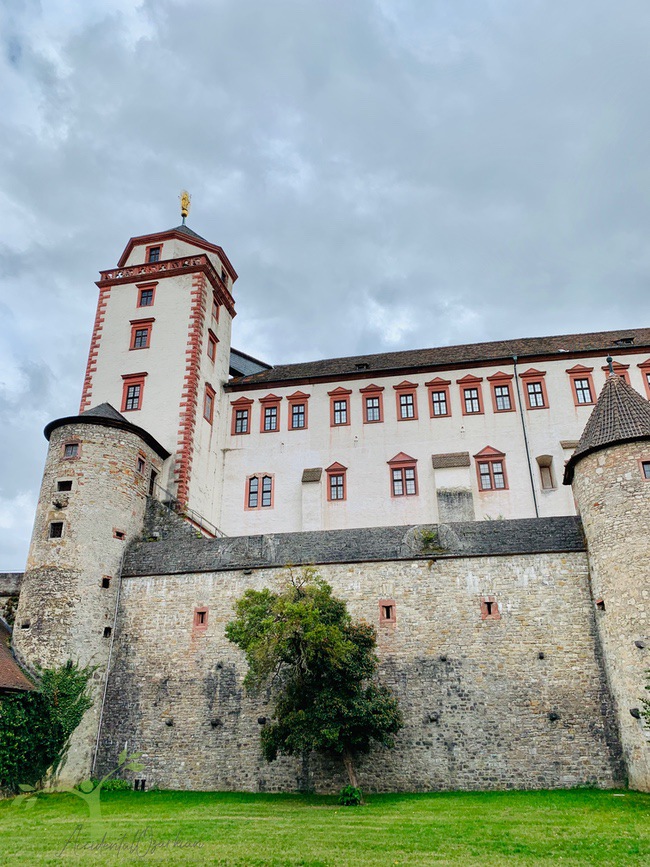
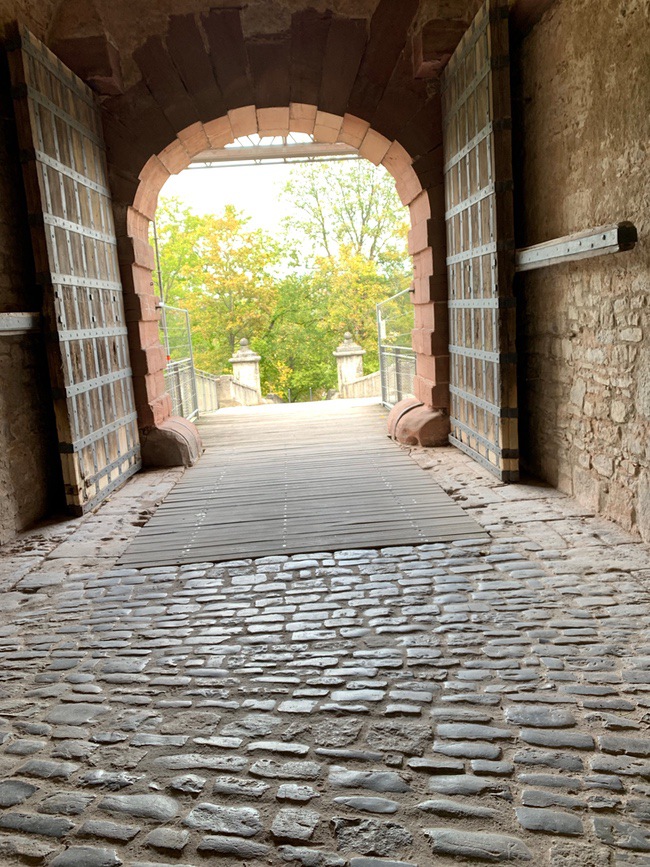
The fortress, practically destroyed by British bombs in 1945, saw completion of its restoration in 1990. This fortress has been bombarded by various weapons throughout the ages, including the following:
- German Peasants’ War (1525)
- Thirty Years War (1631)
- War of the Second Coalition (1801) – Napoleon visited here 4 times in its history
- Austro-Prussian War (1866)
- Franco-Prussian War (1870)
- WWII (1945 bombing)
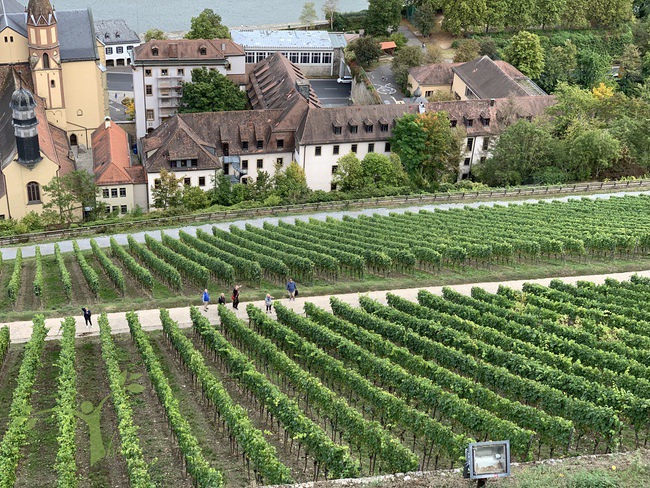
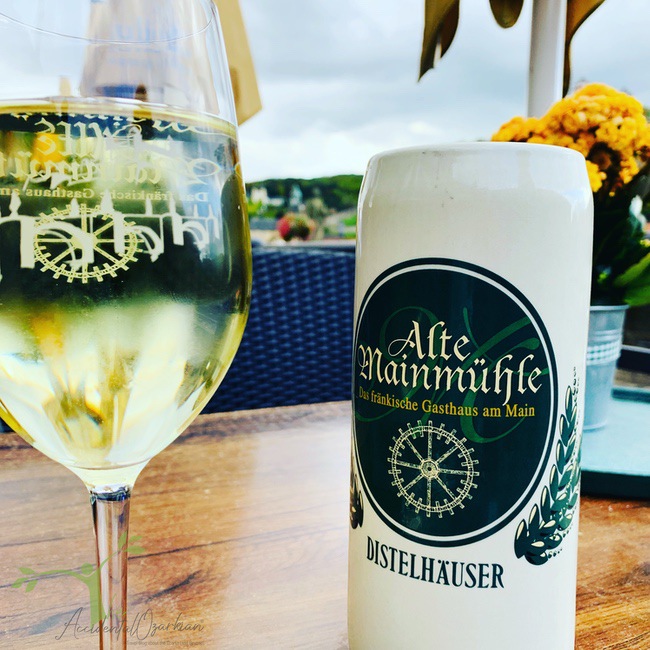
We thoroughly delighted in our day in the city of Würzburg and highly recommend it. We arrived in Wertheim for the next day’s tour, which will be #9 of our Grand European Tour by Viking Cruise Ships.
